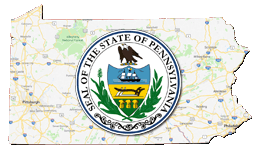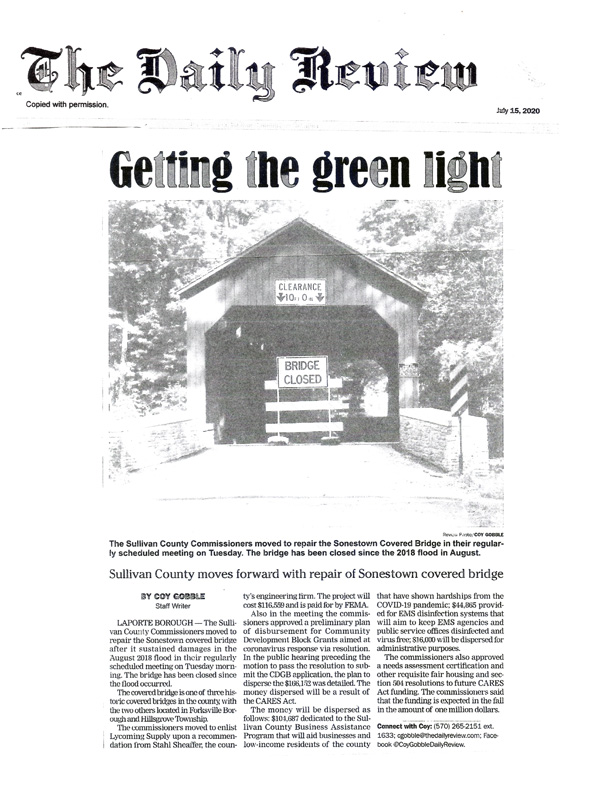
Sonestown Covered Bridge Repairs Approved
WGN 38-57-03

July 15, 2020: Chuck and Nancy Knapp have passed along this article from the The Daily Review about the Sonestown Covered Bridge. Coy Gobble is reporting that the Sullivan County Commissioners have approved the repairs for the Sonestown Coverd Bridge. The bridge has been closed since it was damaged in the flood of August 2018.
Read the full article below. Copied with permission as noted.

Wikipedia, the free encyclopedia provides the following information for the Sonestown Covered Bridge:
The Sonestown Covered Bridge is a covered bridge over Muncy Creek in Davidson Township, Sullivan County, Pennsylvania built around 1850. It is 110 ft (34 m) long and was placed on the National Register of Historic Places (NRHP) in 1980.³ It is named for the nearby unincorporated village of Sonestown in Davidson Township, and is also known as the Davidson Covered Bridge. It was built to provide access to a grist mill which operated until the early 20th century.
Pennsylvania had the first covered bridge in the United States and has the most of any state in the 21st century. In most places, they were a transition between stone and metal bridges, with the roof and sides protecting the wooden structure from weather. The Sonestown bridge is a Burr arch truss type with a load-bearing arch sandwiching multiple vertical king posts for strength and rigidity. The bridge construction is cruder than the other two surviving covered bridges in Sullivan County, with each Burr arch formed from six straight beams set at angles instead of a smooth curve.
The bridge was repaired in 1969 and after flood damage in 1996, 2005, 2013, and 2020. It was also restored in 2001. Despite the repairs and restoration, however, the bridge structure's sufficiency rating on the National Bridge Inventory was only 21.3 percent in 2016, and its condition was deemed "basically intolerable requiring high priority of corrective action".² a It is the shortest covered bridge in the county, but as of 2020 is open only to pedestrian traffic.
Our thanks to long time contributors Chuck and Nancy Knapp for passing this information along to us - Ed.
